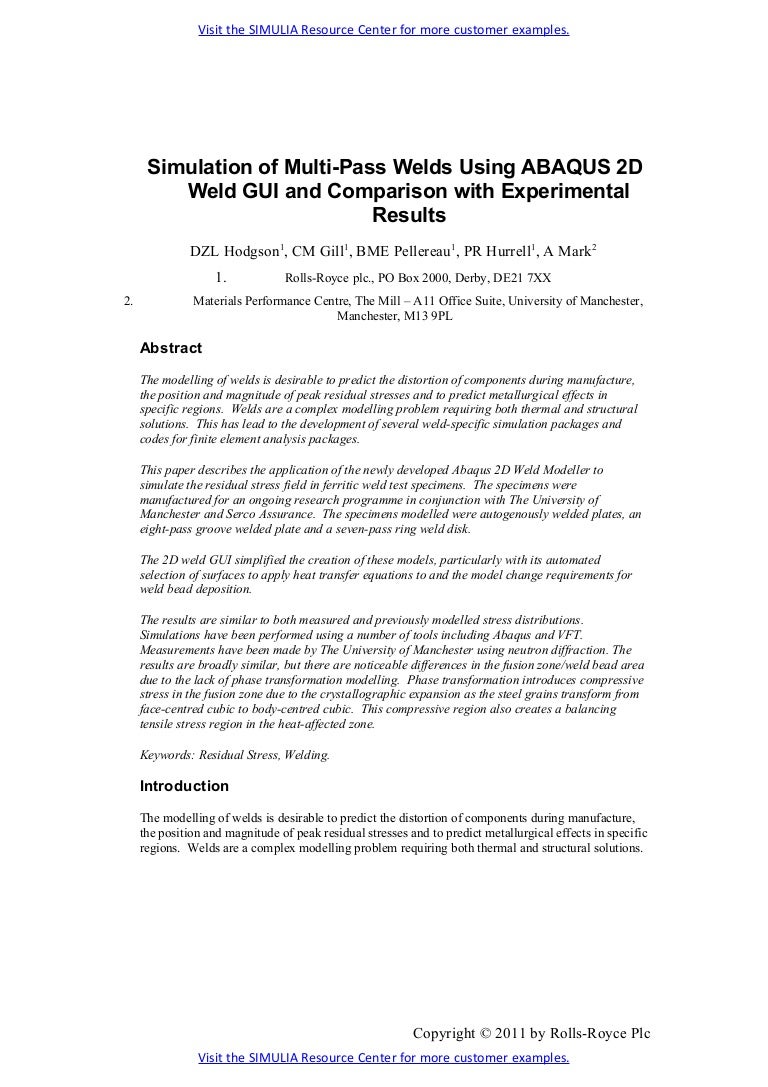> I have problem with error code 11 while using abaqus ver.6.3.1. I
> use the uel subroutine combined by umat and sdvini subroutine for
> the problem of the compression of soilbag. I could pass the initial
> condition and first step, but I face this error code 11 when I start
> to compression the specimen.
Error 11 means 'Segmentation fault', and usually happens under 2
general circumstances:
1) your memory is defective or not working correctly (after a power
failure the BIOS might end up in an inconsistent state and do strange
things). This happens only with weak or overclocked hardware is
usually NOT what's going on.
2) you have a software bug. In ABAQUS with user subroutines, the most
common problem when this happens is that you try to access a read-only
variable, or that you try to write past the boundaries of an array.
With the description you provide, I would diagnose this latter
problem, check all array bounds and variable names. Also, make sure
you declare all variables and that the type is correct (having a
'IMPLICIT NONE' sentence _after_ 'include 'aba_param' helps to
diagnose typos). If you are opening files, make sure you close it at
the end of your code, or that you check that it's opened only once!
Hope this helps,
Fernando
An overconstraint means applying multiple consistent or inconsistent kinematic constraints. Many models have nodal degrees of freedom that are overconstrained. Such overconstraints may lead to inaccurate solutions or nonconvergence. Common examples of situations that may lead to overconstraints include (but are not limited to):
contact slave nodes that are involved in boundary conditions or multi-point constraints;
edges of surfaces involved in a surface-based tie constraint that are included in contact slave surfaces or have symmetry boundary conditions; and
boundary conditions applied to nodes already involved in coupling or rigid body constraints.
check for overconstraints caused by combinations of the following: base motions, boundary conditions, contact pairs, coupling constraints, linear constraint equations, mesh-independent spot welds, multi-point constraints, rigid body constraints, and surface-based tie constraints;
check for overconstraints resulting from kinematic constraints introduced through connector elements, coupling elements, special-purpose contact elements, and elements with incompressible material behavior;
identify through detailed messages the constraints that cause overconstraints;
automatically resolve a limited set of consistent overconstraints detected during model preprocessing and during an ABAQUS/Standard analysis;
use the equation solver to detect overconstraints that cannot be resolved automatically; and
can have the default behavior modified.

Section 28.6.1 Of The Abaqus Analysis User's Manual File


Section 28.6.1 Of The Abaqus Analysis User's Manual Free
Working with ABAQUS/CAE model databases, models, and files Creating and analyzing a model using the ABAQUS/CAE modules Engineering features and modeling techniques.